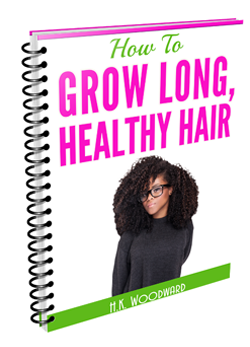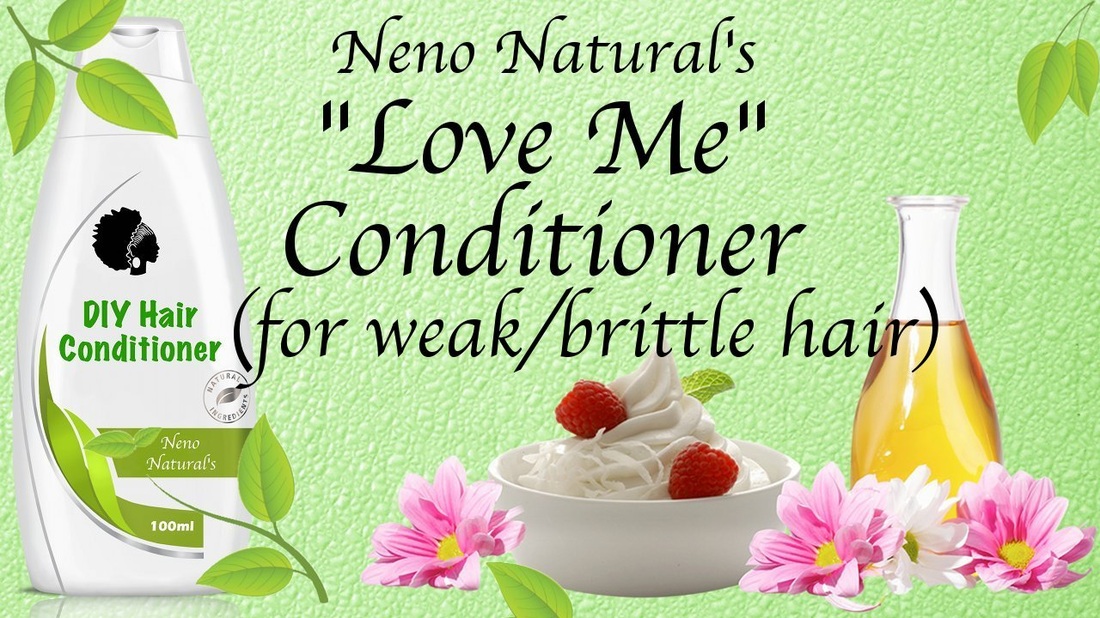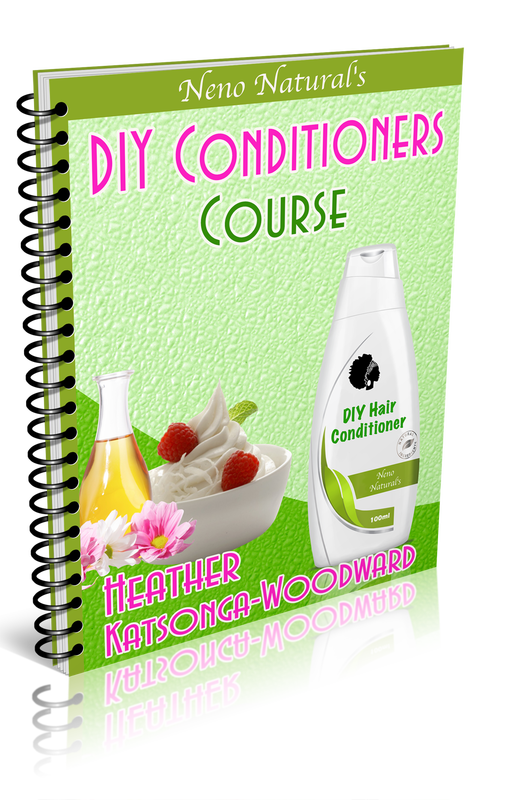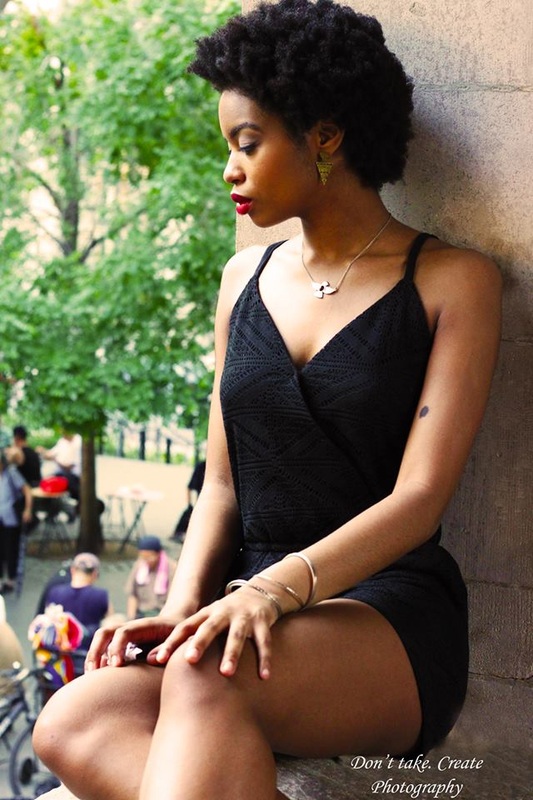
Even when you know your hair quite well sales people that appear to know their stuff will feed on your fears.
I went to a rebranding event by ORS (formerly Organic Root Stimulator). At the event they had a woman with a gadget that looks at your scalp so that she can analyze your hair and draw conclusions about its state. She said:
Trust me, I felt awful! She tried to find out how I take care of my hair. "Are you a naturalista?" she asked? I was like, "Umm, I have natural hair, so I guess so?" sheepishly. "No, having natural hair doesn't make you a naturalista. A naturalista is someone who makes all their own products and tries to source all organic and natural stuff." I don't agree with that definition but I didn't argue. I told her I like to use stuff that won't damage my hair in the long run but I don't look for terms like "organic" and "natural" because they mean nothing; sales people just throw those terms around to close sales. Anyhow, long story short, in that moment I would have bought anything she was selling. I was so freaked out by what she had said but...she didn't have any stock. When we left that event I started looking up trichologists in my area but by the next morning I had calmed down and realized it was nothing more than sales spiel. I have never exfoliated my scalp in my life, ever, so I don't think it's essential. I massage my scalp regularly and wash my hair and scalp weekly - I don't get dandruff and my scalp is not dry. In this video I exfoliate my scalp for the first time using my own methods plus I have some random chatter with Harry, my husband. It's early Sunday morning and we're just chilling. Enjoy. 
This recipe is for a deep conditioner. It will help to soften, moisturize and nourish dry hair.  Click to Read Queen Samantha's Natural Hair Regimen Click to Read Queen Samantha's Natural Hair Regimen
Heated oil phase (38%)
Heated water phase (52%)
Cool-down phase (10%)
Method
You will need two pyrex bowls because you will be creating two bain maries (a.k.a. double boilers)
Application
Storage: The shelf life is 9 to 12 months. Store in a cool, dry place. 
 Click to Read Queen Samantha's Natural Hair Regimen Click to Read Queen Samantha's Natural Hair Regimen
A double-boiler is a gentler way for heating the ingredients. It stops ingredients from getting unnecessarily overheated and destroyed. This is especially important because different ingredients have a different melting point.
Can't I Just Heat On The Hob Or Microwave? No, you can't. If you used a hob the direct heat would be too strong and destructive. If you used a microwave you would overheat the ingredient, at best; at worst, you would have some kind of an explosion. Pyrex dishes won't crack from the constant heating and cooling. If you choose to use another type of glass, i.e. not pyrex bowls or jugs, Make sure whatever glass bowl you are using can take the heat! Have you ever poured boiling hot water into a glass tumbler - it cracked didn't it? That's what most glasses will do, pyrex is specifically designed to take heat well.
This recipe is for a deep conditioner. It will not only help to moisturize and nourish dry hair, it also contains essential oils, hydrosols and other ingredients that help to strengthen hair.
 Click to Read Queen Ashley's Natural Hair Regimen Click to Read Queen Ashley's Natural Hair Regimen
Heated oil phase (22%)
Heated water phase (70%)
Cool-down phase (8%)
Method
You will need two pyrex bowls because you will be creating two bain maries (a.k.a. double boilers)
Application
Storage: The shelf life is 9 to 12 months. Store in a cool, dry place. 
The six DIY Conditioner recipes that I give out for free are deep conditioners designed for weekly use. If you wanted to make a shampoo for daily use you would just halve the quantity of the following ingredients:
In my ebook, DIY Conditioners Course I give you the exact volumes needed to convert each deep conditioner to its daily use equivalent.
If you find that a conditioner you've made yourself is too thin, next time you formulate you can:

If you don't have cetearyl alcohol in your conditioner add it at 50% of the cationic compound (BTMS, cetrimonium bromide or cetrimonium chloride) and reduce the water content by the same amount. So, if you have 6% BTMS, add 3% cetearyl alcohol and remove 3% water - simple! You can also use cetyl alcohol but I personally find that cetearyl alcohol works better. Obviously, if you want to make a conditioner thinner if it is too thick then, you do the opposite:
Remember to keep to the usage rates advised by the manufacturer.

Because we dry-haired girls only wash our hair once a week all my DIY Conditioners are designed to be for weekly or twice-weekly use. This makes them a bit stronger and more conditioning than a daily use rinse-off conditioner. All the ingredients are split into 3 phases:
At a base level, if you have what is called a cationic compound in the right amount, you have a conditioner. So, a very basic daily use conditioner would be: 4% BTMS-50 (the cationic compound) + 1% optiphen preservative + 95% water But how bland and dissatisfying would that be - no smellies! I like smellies so I would add fragrance or essential oil to get: 4% BTMS-50 (the cationic compound) + 1% optiphen preservative + 1% essential oil blend or fragrance oil + 94% water But I have dry hair so I don't condition daily so I would need a more intense conditioner for weekly use so I would bump up the cationic compounds to get: 6-8% BTMS-50 (the cationic compound) + 1% optiphen preservative + 1% essential oil blend or fragrance oil + 90-92% water 
But I have VERY dry, tangle-prone hair so I need more than just cationic compounds, I need a fatty alcohol for more moisture and slip plus some carrier oils for greater moisture and nourishment. So I change the formulation to get:
6% BTMS-50 (the cationic compound) + 3% cetyl alcohol or cetearyl alcohol + 10% carrier oil blend + 1% optiphen preservative + 1% essential oil blend or fragrance oil + 79% water But that's a lot of water - I'd want something better, something with herbs and extracts that are beneficial to hair moisture, strength, softness. So I would add an infusion or hydrosol / floral water. Then I start thinking are there any ingredients that can soften and moisturise my hair further? Perhaps make detangling even easier? And the answer would be, yes, throw in some hydrolysed protein. As with all kinky-curly hair it's sometimes hard to get it shiny, can any ingredient improve shine? Yep, try adding some silicones or silicone alternatives. Silicones not only help with detangling and softening hair but also boost shine/gloss and a healthy appearance of hair. Plus, they can help you retain moisture for longer, they coat hair and seal it like an oil or butter would. 
 Click For Toia's Hair Regimen Click For Toia's Hair Regimen
Our first consideration in making a shampoo was simple: to get an effective cleanser with a secondary goal of making it a little moisturising and conditioning too because our hair is so dry.
With a conditioner there are several primary goals:
Less important goals include:

As I introduce you to ingredients I will tell you how each ingredient helps to further one or several of the above goals. The key ingredients in a conditioner have a positive charge so that they stick to negatively charges hair.
Get your FREE ebook on How To Grow Long, Healthy Natural Kinky or Curly Hair. 
You might also like:
This recipe is for a deep conditioner. It will not only help to moisturize and nourish dry hair, it also contains essential oils that have been empirically shown by scientists to improve hair growth. INGREDIENTS  Click for Toia's Hair Regimen Click for Toia's Hair Regimen
Heated oil phase (19%)
Heated water phase (69%)
Cool-down phase (12%)
Method
You will need two pyrex bowls because you will be creating two bain maries (a.k.a. double boilers)
Application
Storage: The shelf life is 9 to 12 months. Store in a cool, dry place.

When you're making your own conditioner these are all the yummy ingredients you will want to include:
 Click For Toia's Regimen Click For Toia's Regimen
Technically, a product has to contain cationic ingredients to be called a conditioner. In the past I have made videos for you on how to make DIY conditioners using food ingredients:
When you are formulating a conditioner the first thing you should decide is which cationic quaternary compound you will use. The common options are:

|
I now blog about wealth creation - so if you have any money questions meet me there, you can do all sorts of cool things like leave me a voicemail.
By Heather Katsonga-Woodward
I was a natural hair blogger and mixtress living between London & Chicago from 2012 to 2017. I always thought I was 4C but some say 4B; images below - you decide! Heather xx Categories
All
Archives
November 2016
|




















